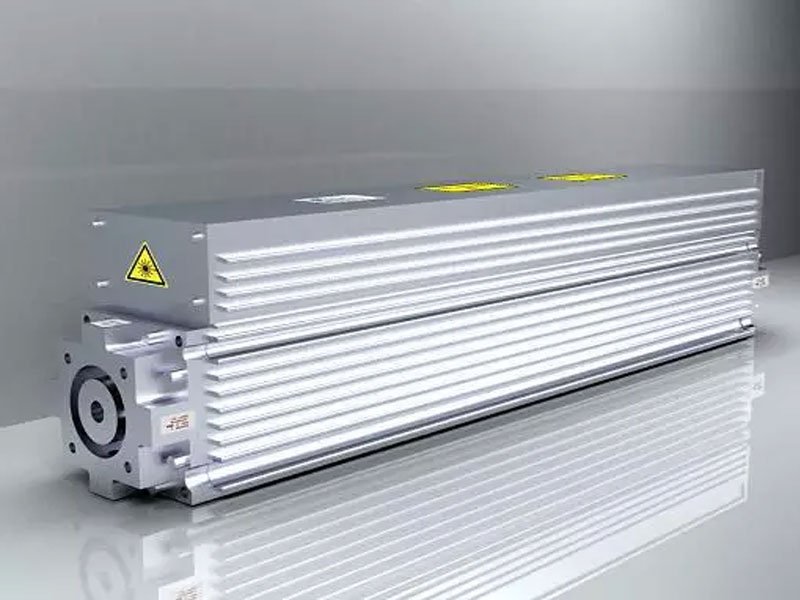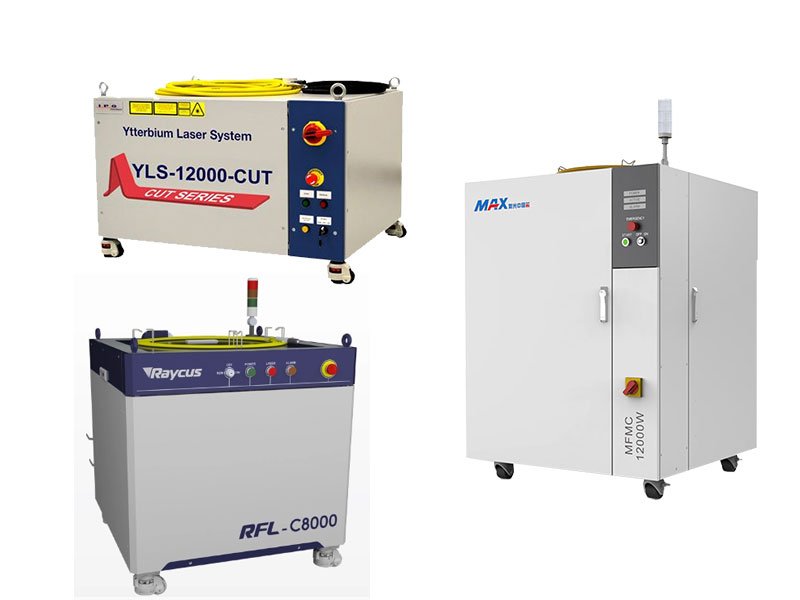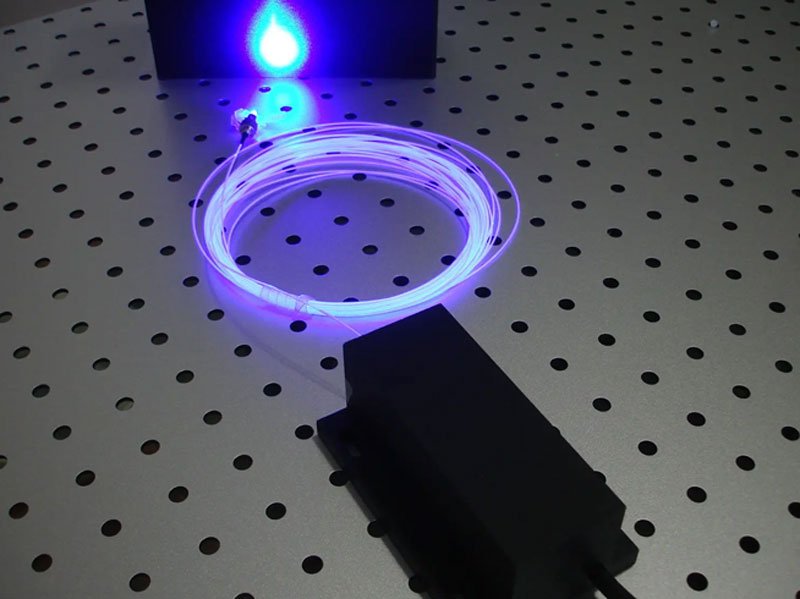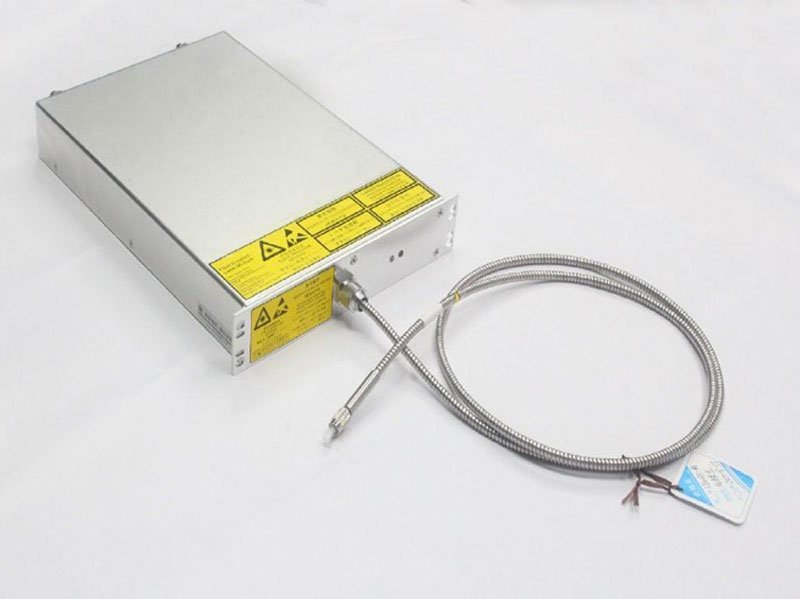Lasers have been integrated into our daily lives and have a wide range of applications. In the medical field, surgeons use lasers to perform eye surgery and cancer treatment with precision and efficiency; in the manufacturing industry, lasers are used for material processing, cutting, marking, welding, cleaning and giving various materials exquisite texture to help the development of the manufacturing industry; the beauty industry is also inseparable from lasers, which can help people remove tattoos or hair removal and bring beautiful experiences; in addition, laser light shows add gorgeous colors to concerts and bring stunning visual feasts to audiences. In recent years, new technologies such as laser holographic projection have been emerging, bringing new development opportunities to all walks of life.
This article will focus on the description of all types of laser beams. I hope it will be helpful to those who want to understand the different various types of lasers.
What Is a Laser?
Lasers, which stand for stimulated light amplification by radiation, are devices that emit narrow, strong beams of light based on the optical amplification process of excited emission of electromagnetic radiation. Lasers produce highly directional, monochromatic (single color), and coherent (all waves are in phase) light. These properties make lasers very useful in a wide range of applications in science, industry, medicine, and other fields.

What Are Lasers Made Of?
A laser is composed of three main components, including a gain medium, an energy source, and an optical cavity.
1. Energy: varies depending on the type of laser, including laser diodes, discharges, chemical reactions, flash lamps, or other lasers.
2. Gain medium: The type of gain medium determines the wavelength and power output of the laser. Glows when excited by energy. Examples include carbon dioxide gas in carbon dioxide lasers and rare earth elements in solid-state lasers when excited by energy.
3. Resonator: amplifies optical gain through a mirror surrounding the gain medium.
What Are the Different Kind of Lasers?
- Classified by active medium: gas laser, liquid laser, solid state laser,fiber laser and semiconductor laser.
- Classified by wavelength: ultraviolet laser, visible laser and infrared laser.
- Classified by working mode: continuous laser and pulsed laser.
5 main types based on the gain medium:
- Gas laser: Use a gas mixture as the active medium. Including carbon dioxide lasers, helium neodymium lasers, argon lasers, krypton lasers and excimer lasers.
- Solid state laser: Utilizes solid materials such as crystals or glass mixed with rare earth elements. Examples include ruby lasers and Nd:YAG lasers.
- Fiber laser: Using optical fiber as the gain medium, it is famous for its precision and efficiency.
- Liquid laser (dye laser): Use organic dyes dissolved in solvents as gain media to provide tunable wavelengths.
- Semiconductor laser (laser diode): Uses semiconductor materials and PN junctions to generate laser light.

Types of Commercial Lasers
Common commercial laser types on the market mainly include:
- Helium-neon laser: The wavelength is 633nm, and the power is generally between a few milliwatts and tens of milliwatts.
- Infrared laser diode: The wavelength is generally between 780nm and 980nm, and the power is generally between a few milliwatts and tens of watts.
- Nd:YAG laser: The wavelength is 1064nm, and the power is generally between tens of watts and several kilowatts.
- Fiber laser: The wavelength can be customized, and the power generally ranges from tens of watts to several kilowatts.

Features of Different Types of Lasers
| Feature | Gas Laser | Liquid Laser (Dye Laser) | Solid-State Laser | Fiber Laser | Semiconductor Laser |
|---|---|---|---|---|---|
| Active medium | Gas (Helium-neon, CO2, etc.) | Dye solution | Crystal, glass (doped with rare earth ions) | Optical fiber (doped with rare earth ions) | Semiconductor material (GaAs, etc.) |
| Wavelength range | Wide, depends on gas type | Broad tunable range | Medium | Customizable | Narrow |
| Output power | Ranges from milliwatts to kilowatts | Can reach high power | Ranges from milliwatts to kilowatts | Medium to high power | From milliwatts to watts |
| Structural complexity | Relatively simple | Complex | Medium | Medium | Simple |
| Efficiency | High | Medium | High | High | High |
| Stability | Stable | Relatively unstable | High | High | High |
| Cost | Medium | High | Medium to high | Medium | Low |
| Typical applications | Laser pointers, barcode scanners, optical communication | Scientific research, tunable lasers | Material processing, laser medicine, laser ranging | Material processing, optical communication, sensing | CD/DVD reading/writing, optical communication, laser pointers |
- Gas lasers: Offer a wide range of wavelengths, simple structure, and high efficiency, commonly used in laser pointers, barcode scanners, and other everyday applications.
- Liquid lasers: Provide a broad tunable range and high power, suitable for scientific research applications requiring tunable light sources.
- Solid-state lasers: Feature high efficiency, long lifetime, and good reliability, widely used in material processing, laser medicine, and other fields.
- Fiber lasers: Combine the high efficiency of solid-state lasers with the transmission advantages of optical fibers, offering customizable wavelengths and applications in material processing, optical communication, and sensing.
- Semiconductor lasers: Possess small size, low power consumption, and low cost, making them the most widely used laser type, commonly found in CD/DVD reading/writing, optical communication, and laser pointers.

Different various types of lasers wavelengths
Gas Lasers:
- Helium-Neon (HeNe) Laser: Typically emits light at a wavelength of 632.8 nanometers (nm), falling within the red portion of the visible spectrum.
- Carbon Dioxide (CO2) Laser: Emits infrared light primarily at wavelengths of 9.4, 10.6, and 10.64 micrometers (µm).
- Argon Ion Laser: Produces multiple visible wavelengths, including blue (488 nm), green (514 nm), and violet (457 nm).
Solid State Lasers:
- Ruby Laser: Emits red light at a wavelength of 694.3 nm.
- Nd:YAG Laser (Neodymium-doped Yttrium Aluminum Garnet): Typically emits infrared light at a wavelength of 1064 nm, with optional frequency doubling for green (532 nm) output.
- Er:YAG (Erbium-doped Yttrium Aluminum Garnet) Laser: Emits infrared light at a wavelength of 2940 nm, suitable for dermatological and dental applications.
Fiber Lasers:
- Ytterbium (Yb)-Doped Fiber Laser: Emits near-infrared light at wavelengths around 1060 nm and 1070 nm.
- Erbium (Er)-Doped Fiber Laser: Emits light at wavelengths around 1550 nm, commonly used in telecommunications due to low optical loss in optical fibers.
Semiconductor Lasers (Laser Diodes):
- Laser diodes cover a wide range of wavelengths depending on the semiconductor material used and the design of the diode. Common wavelengths include:
- Red: 630 nm to 670 nm
- Green: 510 nm to 540 nm
- Blue: 440 nm to 480 nm
- Violet: 380 nm to 420 nm
Liquid Lasers (Dye Lasers):
- Dye lasers are tunable and can cover a wide range of wavelengths depending on the dye used. Commonly achieved wavelengths range from the ultraviolet (UV) to the near-infrared (NIR) regions of the spectrum.

How a Laser Works
Lasers function based on a fascinating phenomenon called stimulated emission. Here’s a breakdown of the key steps involved:
- Pumping: The laser needs an external energy source, called a pump source. This pump source can be electrical current, light from another laser, or even chemical reactions. The pump source excites the electrons in the atoms or ions of the laser’s active medium. This active medium can be a gas, liquid, solid crystal, or even a semiconductor material, depending on the type of laser. Think of exciting the electrons as moving them from a lower energy level (ground state) to a higher energy level (excited state).
- Stimulated Emission: Once an electron is in the excited state, it’s like an unstable situation. The electron wants to return to its ground state and release its excess energy. This can happen spontaneously, releasing a photon (a packet of light energy) with a specific wavelength. However, in a laser, we want to stimulate this process to create a powerful, coherent beam.
Here’s where stimulated emission comes in. When an excited atom or ion is exposed to a photon of light with the exact same energy level it needs to return to its ground state, something interesting happens. This external photon “stimulates” the excited atom or ion to release another photon with the same energy, wavelength, and direction as the incoming photon. Essentially, the incoming photon has triggered the release of another identical photon.
- Optical Amplification: This is where the magic happens. The laser cavity, which consists of two mirrors at opposite ends, plays a crucial role. The mirrors are designed to reflect the newly emitted photons back and forth through the active medium. As these photons travel through the excited medium, they can stimulate even more excited atoms or ions to release even more photons with the same properties. With each pass through the medium, the number of photons is amplified significantly.
- Laser Beam Output: One of the mirrors in the cavity is partially transparent. This allows a small portion of the amplified light to escape the cavity as a coherent, highly directional laser beam. The remaining light continues to bounce back and forth, further amplifying the laser beam within the cavity.

Different kinds of lasers Uses
- Gas Lasers: Laser marking, cutting, welding, and barcode scanning.
- Solid-State Lasers: Material processing, LIDAR technology, and medical procedures.
- Fiber Lasers: Laser Cutting,welding,cleaning, texturing, engraving, and directed energy weapons.
- Liquid Lasers (Dye Lasers): Laser medicine, birthmark removal, and isotope separation.
- Semiconductor Lasers (Laser Diodes): Laser printing, scanning, and medical treatments.
Different Types of Lasers beam and Their Applications
- Manufacturing: Used for cutting, welding, marking, and engraving of materials such as metals, plastics, and ceramics.
- Healthcare: Employed in medical procedures including eye surgery, cancer treatments, tattoo removal, and skin rejuvenation.
- Research: Utilized in scientific experiments, spectroscopy, and particle accelerators for studying matter at atomic and subatomic levels.
- Entertainment: Integral for laser light shows in concerts, theaters, and events, providing visually captivating experiences.
The versatility of lasers, combined with technological advancements, is broadening their usage across various sectors. They have evolved into essential instruments shaping the contemporary world, from precise manufacturing to advanced medical therapies and captivating entertainment. Familiarity with the diverse types of lasers and their capabilities empowers industries to harness their potential for innovation and advancement. As laser technology progresses, the horizons for exploration and discovery are limitless, offering a future brimming with extraordinary accomplishments and pioneering innovations.
